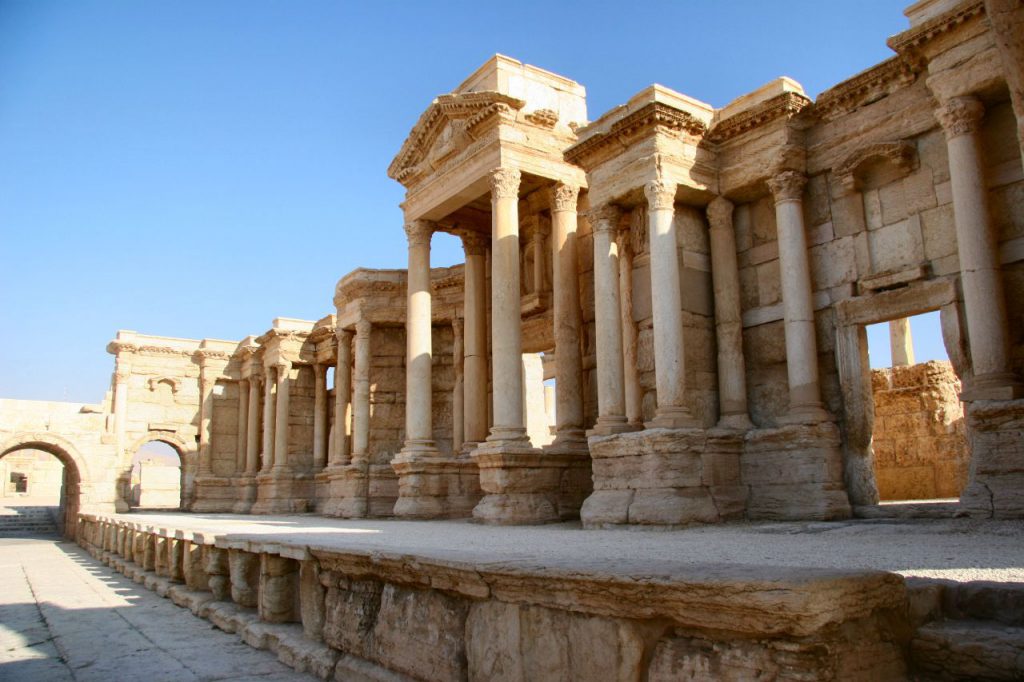By Yara Boraie
Earlier this year, Islamic State militants claimed that the admiration of the ancient sites in Syria and Iraq is an act of idolatry.
Since then, they have horrifically bulldozed through some of the oldest and most valued historic sites in Syria and Iraq including the 2,000-year-old Syrian Temple of Baalshamin and the 3,000-year-old Iraqi city of Nimrud, and most recently Palmyra’s 2,000-year-old Arch of Triumph among several others. Blood has been shed, and in the blink of an eye, so has some of humanity’s rich heritage in the very cradle of civilization.
In response, the Institute for Digital Archaeology has launched ‘The Million Image Database’ – an innovative program that aims to capture one million 3D images of at-risk objects threatened by IS in the Middle East by the end of 2016. Developed in collaboration with UNESCO World Heritage, post-modern archaeology experts from New York University’s Institute for the Study of the Ancient World and Oxford University, this modern-day team of “Monuments men” are planning to “flood the Middle East with 3D cameras” to digitally document of ancient buildings, sculptures and artifacts under threat in the region.
If these items are destroyed, they believe they can use high-tech printing technology to reconstruct replicas of these damaged treasures.
“There is hope,” said Roger Michel, the IDA’s director. “By placing the record of our past in the digital realm, it will lie forever beyond the reach of vandals and terrorists.”
The initiative plans to distribute up to 5,000 cheap 3D cameras to volunteers in selected countries including Iraq, Iran, Yemen, Lebanon and eastern Turkey by December and have them capture high-quality images of as many historic sites as possible that will then automatically be uploaded to an online database.
“This is a race against time,” Michel told BBC Radio 4’s Today Programme. “We’ve changed our timetable in recognition of the places being destroyed.”
The institute has partnered with NGOs such as UNESCO and hyperlocal networks of people to distribute the cameras on the ground.
“They are people in local antiquary societies, local museum curators, they are embedded archaeologists, they are people just like the poor fellow who was killed in Palmyra, Mr. al-As’ad, the people that are passionate about preserving their local heritage,” said Michel.
The images will also help forensic investigators and the police identify objects that have been looted and sold into the international art market.
“It will include GPS data and dates,” Michel said. “If someone is selling an object and says it was obtained in Syria in the 1930s we will know that was not the case because in 2015 it was at longitude X and latitude Y.”
Alexy Karenowska, a physicist at Magdalen College, Oxford, who worked on the design of the cameras, which cost about $27, describes them as “robust and relatively simple to operate.”
“We want to do a sweep, as fast and as much as we can, using simple technology for images at multiple angles in a single shot,” said Karenowska.
More than just inanimate objects
Historical monuments have long been of immense cultural significance to its homeland, symbolizing a country’s civilization, the evolution of mankind, evidencing its people’s achievements and victories for centuries to come. Articulating their country’s history, these cherished treasures are of immeasurable value to future generations as more than just symbols of remarkable craftsmanship and art, but as living documents of people’s history, heritage and identity.
The destruction of these treasured monuments result in legacies lost – centuries of history, architecture and culture destroyed that will never be seen by our own grandchildren, let alone future generations of the very countries whose people watch their crown jewels of their heritage shatter every day.
Although an estimated number of around 4 million Syrians have fled the brutality, these inanimate monuments signify their origins, local identity and legacy that they were forced to leave behind.
In spite of the merciless destruction of a nation’s lives and their identity, people have found the means, bravery and will to preserve their history. Call it a peaceful retaliation.
“All around the Middle East, they feel so strongly about their local identity and history that they’re willing to help,” Michel explained.




















Comments